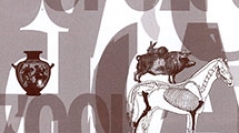

 Anthropozoologica
48 (2) - Pages 447-465
Anthropozoologica
48 (2) - Pages 447-465Across the Caribbean, the widespread presence of canine remains at archaeological sites from the Saladoid period raises questions about the role of “man’s best friend.” Dog (Canis familiaris) remains have been found located in both refuse middens and burials adjacent to human graves in a number of sites in the French Antilles and Barbuda, West Indies. This paper will critically examine dog remains and discuss the varied duality of the dog’s role in the Saladoid world: from food source to lifelong companion. The importance of dogs within Amerindian sites from Saint Martin, the Guadeloupe archipelago, Martinique and Barbuda will be explored from a zooarchaeological perspective, concluding with a critical discussion of changes in cultural patterns, as seen through the decline in dog remains during the Troumassoid and Suazoid period at the sites in the French Antilles.
Lesser Antilles, dog's burial, morphology, saladoid, Pre-Columbian